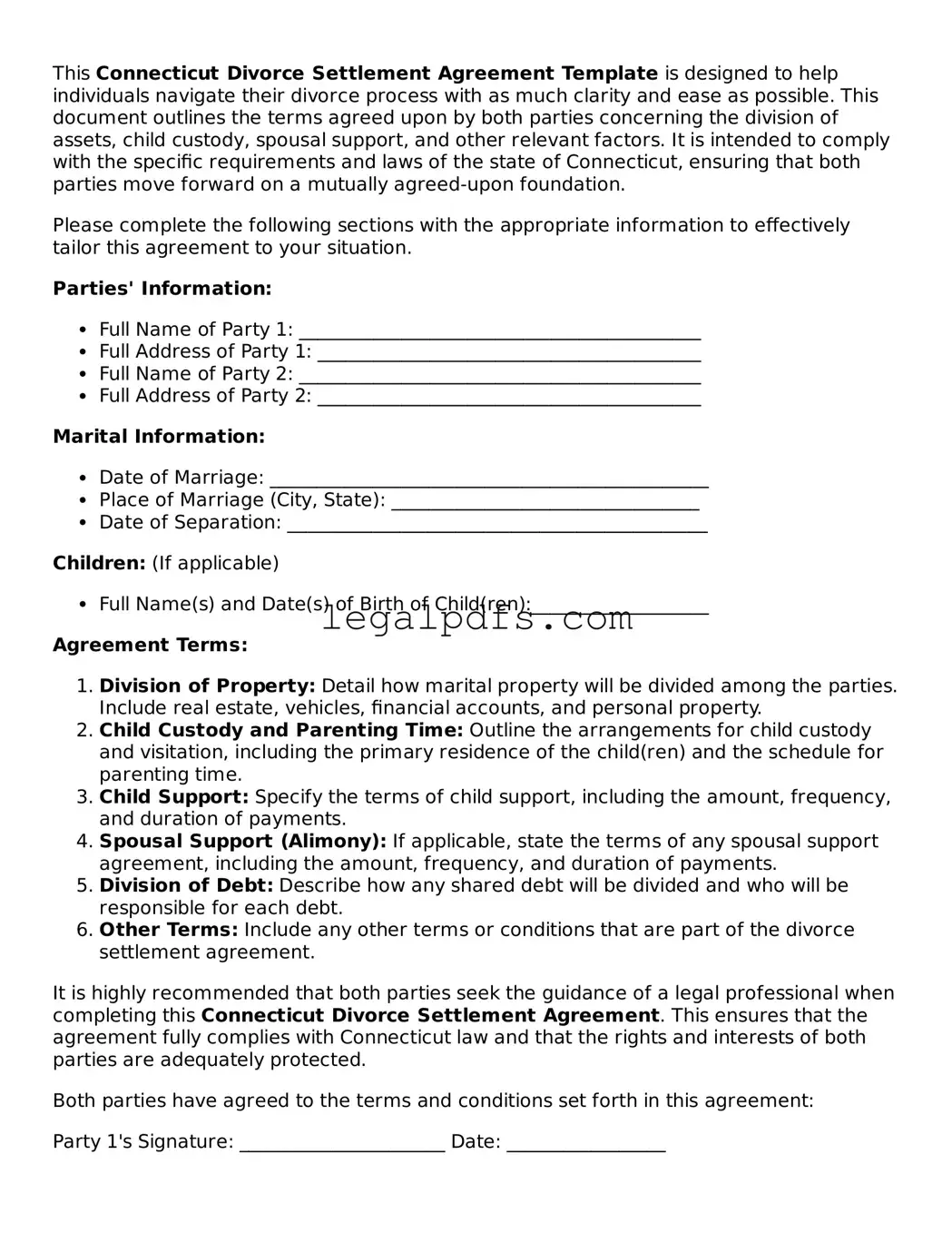What is a Connecticut Divorce Settlement Agreement?
A Connecticut Divorce Settlement Agreement is a legal document that outlines the terms agreed upon by both parties in a divorce. This includes the division of assets, debts, child custody arrangements, spousal support, and any other relevant details. It is designed to finalize the terms of the divorce in a manner that is fair and acceptable to both parties, minimizing the need for court involvement.
Do I need a lawyer to create a Connecticut Divorce Settlement Agreement?
While it's not legally required to have a lawyer to create a Connecticut Divorce Settlement Agreement, it is strongly advised. A lawyer can help ensure that the agreement is legally sound, fair, and in your best interest. They can also help navigate the complexities of Connecticut divorce law and ensure that all legal requirements are met.
What should be included in a Connecticut Divorce Settlement Agreement?
The agreement should detail the division of all marital assets and debts, including homes, vehicles, retirement accounts, and personal property. It should also outline the terms of spousal support, child custody arrangements, visitation schedules, and child support obligations. Each party’s responsibilities regarding any joint financial obligations, such as mortgages or loans, should also be included.
How is child custody determined in a Connecticut Divorce Settlement Agreement?
Child custody is determined based on what is in the best interest of the child or children involved. Parents can negotiate custody arrangements and include them in their Divorce Settlement Agreement. These arrangements may include joint custody, sole custody, and the specifics of visitation rights. The court must approve these arrangements, ensuring they serve the child's best interests.
Can a Connecticut Divorce Settlement Agreement be changed after it’s finalized?
Yes, but changes to a finalized Divorce Settlement Agreement require court approval. Either party can file a motion to modify the agreement, but they must demonstrate a significant change in circumstances that justifies the modification. These changes might involve financial hardships, relocation, changes in employment, or adjustments to child custody arrangements.
What happens if we cannot agree on the terms of our Divorce Settlement Agreement?
If both parties cannot agree on the terms, the divorce may proceed to trial, where a judge will decide on the unresolved issues. This process can be longer and more costly than reaching an agreement outside of court. Mediation might be a viable alternative, offering a less adversarial approach to resolving disputes and reaching a mutually acceptable agreement.
How is the Connecticut Divorce Settlement Agreement enforced?
Once the Divorce Settlement Agreement is finalized and approved by the court, it becomes a legally binding document. Failure to comply with the terms of the agreement can result in legal consequences, including contempt of court. If one party violates the agreement, the other party can file a motion with the court to enforce compliance.
